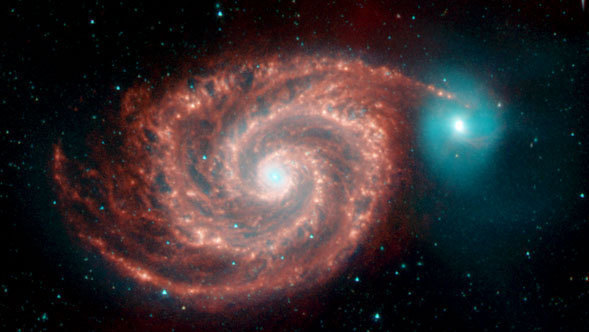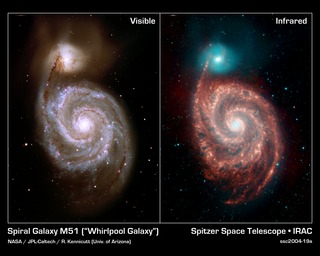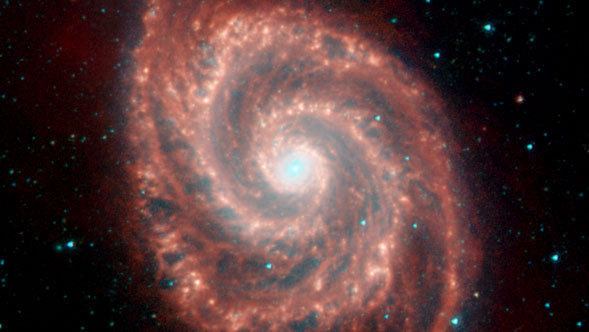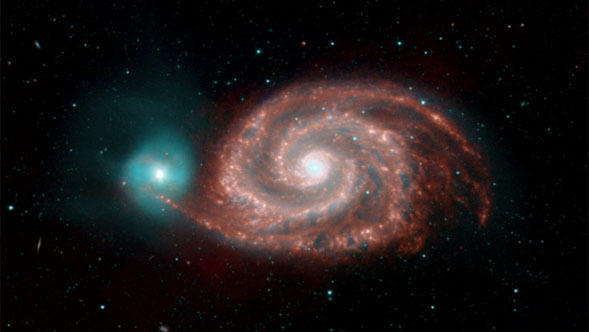
News Release • July 26th, 2005 • feature05-12 •
Written by Linda Vu
Spitzer Science Center
For the second time, Spitzer Legacy science teams have released their most recent data and value-added projects to the public via the World Wide Web.
For nearly two years, Legacy astronomers have been observing, collecting data, and cataloging their cosmic discoveries. As soon as their Spitzer data is processed by the Spitzer Science Center (SSC), it is released to the public. The Legacy team scientists further analyze the Spitzer data, and add their own data from ground-based and fellow space-borne telescopes to provide a "big picture" view of the Universe. The value-added information is delivered to the SSC and released to the world as a public service.
Filling over 70 gigabytes of data volume, Spitzer's Wide-area Infrared Extragalactic Survey (SWIRE) project alone just released more than 1,000 enhanced images, which map the evolution of galaxies and star formation. Spitzer's C2D project made spectroscopic scans of the Taurus, Perseus, and Orion star-formation regions publicly available. These scans using Spitzer's Infrared Spectrometer (IRS) will give scientists a better idea of what molecules are present during the star-formation process. Further information on these products and the products made available by the other four Legacy teams is available at the Spitzer astronomer's website.
The Legacy programs consist of six large observing projects that were selected in November 2000 following a worldwide call for proposals and an extensive peer review process. The telescope was launched in August 2003 and in its first year the approved Legacy projects used approximately 3,160 hours of Spitzer observing time.







